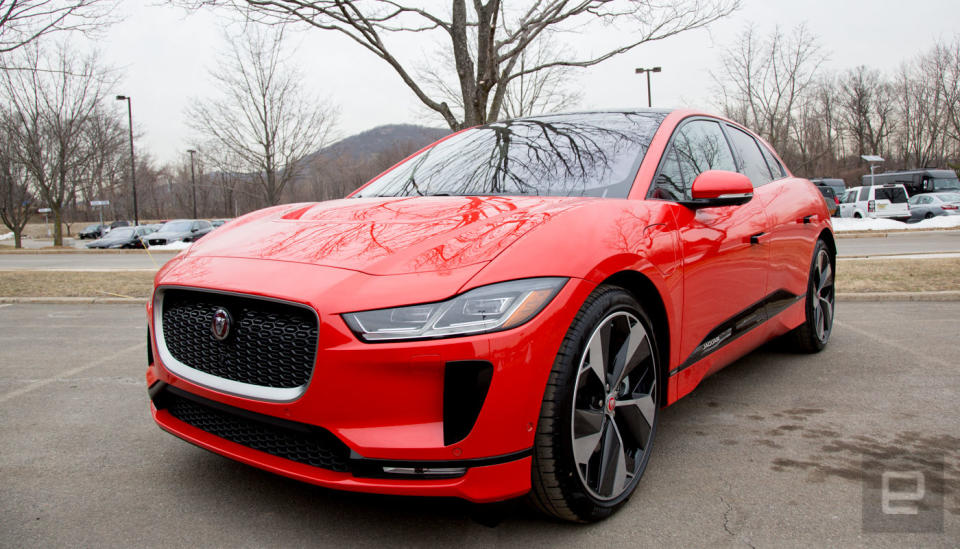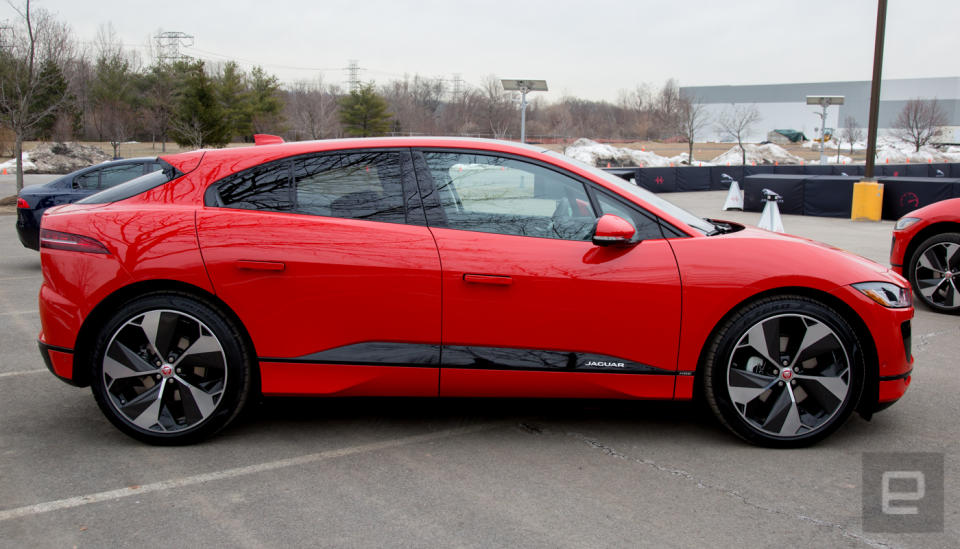The experience and vision behind the Jaguar I-Pace
Building the car was an edict directly from the CEO.
Typically, when an automaker announces something completely different to its lineup, it involves months -- if not years -- of meetings with top executives, multiple focus groups and a lot of hand-wringing. For the upcoming Jaguar I-Pace, that wasn't the case.
Announced at the Los Angeles Auto Show in 2016, the journey of the first electric vehicle from Jaguar started four years ago when CEO Ralf Speth made the decision for the British company to get into the electrified market. "It was not the process to which we are used to for generating a car," said Dr. Wolfgang Ziebart, technical design director, at the New York Auto Show.
Ziebert noted that many people probably didn't expect a vehicle like the I-Pace from Jaguar this early in the EV game. "They probably expected it from a different company," he said.
And while it's almost certain at this point that nearly all automakers will be transitioning to some sort of electrified powertrain, Jaguar went all-in on its decision pretty early in the game. So much so, that it's going after the biggest name in electric cars: Tesla.
During an I-Pace event, the automaker pitted the I-Pace against the Tesla Model X 75D in a zero-to-60 race. The I-Pace beat the Model X by .4 seconds (4.5 versus 4.9 respectively)
Of course there are the quicker 100D and P100D model Teslas, but in terms of pricing, the 75D is closest in price even though it's about $10,000 more than $69,500 Jag.
Tesla is an obvious target since it's the biggest name in EVs. But four years ago when Jaguar's CEO made a unilateral decision to develop an electric vehicle that would fit right into the automaker's history of luxury and speed, it wasn't a sure thing that electric vehicles would resonate with customers at all.
"Yes everyone knew sooner or later we would drive electrically. But when this future would actually happen, nobody knew." Dr. Ziebart said.
Jaguar isn't new to being at the forefront of technology. It was one of the first automakers to introduce radar-powered adaptive cruise control back in 1999. It also made disc brakes a viable option for cars after winning the 1953 Le Mans in a C-Type C outfitted with the technology.
Both of those technologies have since permeated the majority of vehicles on the road. Jaguar was able to add them both to make their cars better. There were features that made sense and not just adding tech for the sake of adding tech. The upcoming EV from the automaker is the same but on a grander scale.
During our brief drive in the I-Pace, it was clear that Jaguar has leapt into the EV world with both feet. The electric SUV feels like a Jag in terms of luxury and performance. The latter we learned about during our brief time behind the wheel, racing it around a parking lot. It's a Jaguar that just happens to skip the gas pump and needs to be hooked up to the grid instead.
Today, it makes sense for the company to put out an SUV EV, but what makes sense now was a gamble four years ago. Decisions like building the pure-electric I-Pace can cripple a company if they don't resonate with customers. The most technologically advanced cars in the world are great for research, but if no one buys them when they go into production, it bad news for everyone involved.

Fortunately, for Jaguar it looks like the I-Pace gamble is paying off with the first year of car's production already pre-ordered by customers. It's good news for a company that's been around for more than 80 years and, like most automakers, has had its own share of ups and downs.
Jaguars have been around since 1935. Ziebart has been working in the automotive industry since 1977. That's a lot of historical knowledge for a company, and it would be easy to sit back play it safe iterating on the cars it already makes. To wait and see what happens then react with your own set of expertise. But Ziebart knows that the automotive industry, especially right now, is about more than just the proficiency of being able to do the same thing over and over, it's about looking towards the future.
"If this is not a company with vision of what the future will look like, then experience is worthless."




